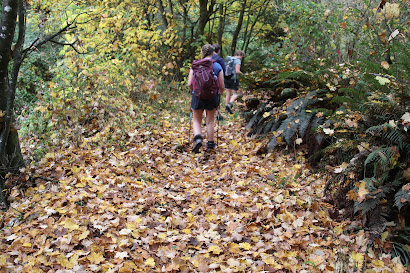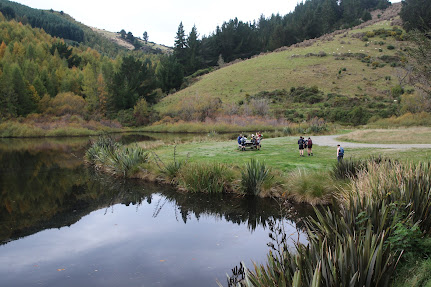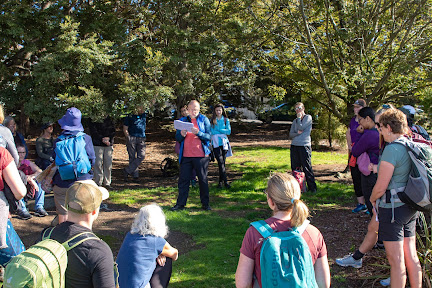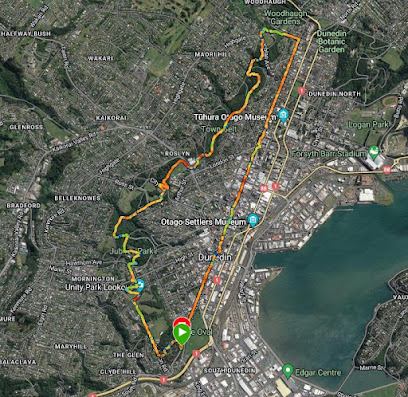It hardly seemed fair as the track starts with a sharp descent of 220m through a pine plantation to the Waikouaiti River where everyone got wet feet crossing the river before a steep 240m climb to Phil Cox Hut. The abrupt climb out of the Waikouaiti River is challenging in places with a couple of fixed ropes for safety but is mostly just an uphill slog and reaching the hut is a welcome resting place. After a drink and snack break, we continued climbing another 100m in height to Yellow Ridge. Once on Yellow Ridge it is a reasonably easy 120m climb over 3km along the undulations of Yellow Ridge. The changes in Yellow Ridge over the years has seen the scrub encroach onto the ridge, leaving barely any of the iconic yellow tussock that I remember and shown in the pictures below - the top photo Yellow Ridge today and the bottom is Yellow Ridge in the 1986.As we approached the junction with Rocky Ridge the wind started to pick up so we didn't spend much time admiring the rock tors on Rocky Ridge before following the track away from Rocky Ridge towards The Gap. The Gap is a prominent cut in the ridge that from a distance looks like a bite has been taken out of it. Not having been to this unusual geological feature for 10 years, the short detour was a must for me, even if we had to negotiate shoulder high gorse to reach it. Once at The Gap it was time to refuel the body again before turning back to rejoin the main track to ABC Cave.
The route to ABC Cave took us through some patches of the golden tussock that once covered all of the Silver Peaks and made it easy to navigate without the need of a track, however today the track is a distinct trail through the scrub that has grown since the stock was removed from the Silver Peaks 30 years ago. The track drops 120m down from the ridge, out of the wind and joins an old four wheel drive track as it follows the creek for a short distance before a short, steep 40m climb up to ABC Cave. The cave is well positioned to avoid most of the wind and we relaxed in the sun while eating a well deserved lunch.Despite the temptation to stay for longer, after lunch we reluctantly headed down the hill back to the four wheel track for our return journey back to the cars. The 120m climb out of the valley that ABC Cave is in didn't seem as bad as I had feared when we made the descent and it seemed no time that we were back on the ridge and heading around to the Rocky Ridge junction. This gave us a good opportunity to see the rocky tors that are more common at this end of the Silver Peaks. The sharp, jagged rock tors are many metres high and have some interesting shapesThe return journey along Yellow Ridge was uneventful until I started noticing the different varieties of mushroom growing along the side of the track. The fungi was not as abundant in size and colour as trip #49 a couple of days ago but they were still worth stopping for a look. Once off the ridge and heading down towards the Phil Cox hut the mushrooms disappeared.



























































